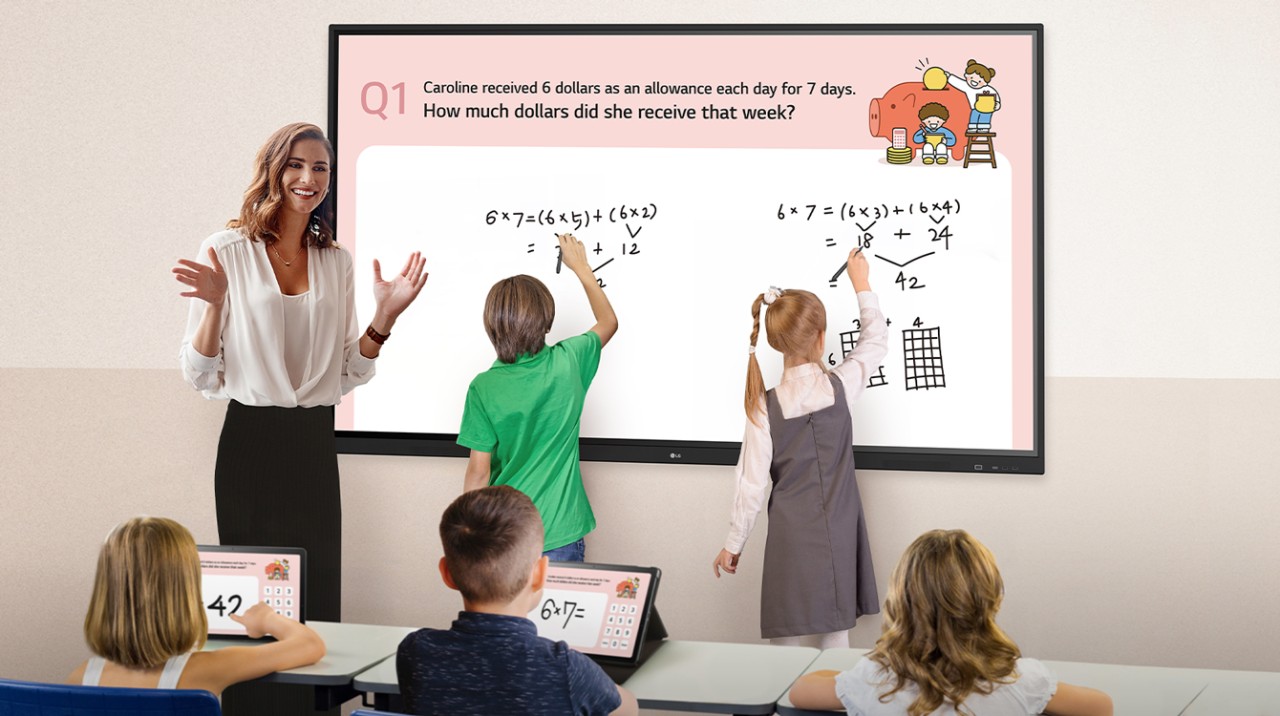In today’s fast-paced world, education is no longer confined to chalk and talk. Classrooms are transforming into interactive learning hubs where technology meets imagination. Among the tools driving this change, digital boards are standing out as a game-changer. Beyond simplifying instruction, these intelligent boards are proving to be powerful allies in nurturing critical thinking and creativity in students.
When students are challenged to go beyond memorizing information and instead explore, evaluate, and create—real learning begins. In this context, the digital board for teaching isn’t just a device; it becomes a dynamic platform for discovery.
Let’s explore how digital boards are not only enhancing engagement but also sparking the creative and analytical minds of our future leaders.
Moving Beyond Passive Learning
Traditional teaching often follows a one-way flow of information—teacher explains, students listen. But digital boards invite participation. By integrating multimedia content, real-time drawing, simulations, and collaborative tools, lessons become active explorations.
Take a science class, for instance. Instead of drawing diagrams on the blackboard, a teacher can use a digital board to display an animated breakdown of the human heart. Students can pause, zoom, and even interact with 3D models. This hands-on visual engagement leads to more questions, deeper discussions, and stronger conceptual understanding.
Critical thinking thrives when students question what they see and relate it to what they know. A digital board becomes the stage where this intellectual curiosity plays out.
Encouraging Inquiry Through Interactive Tools
One of the most remarkable aspects of digital boards is their ability to adapt content in real time. Teachers can present open-ended problems and invite students to brainstorm solutions collectively. Features like polls, digital sticky notes, split-screen comparisons, and annotation tools allow every student to become an active participant.
Imagine a classroom debate on climate change. With a digital board, students can instantly pull up recent data, compare graphs, or visualize environmental impact through interactive maps. They’re not just absorbing information—they’re analyzing it, interpreting it, and presenting insights.
This process develops critical faculties like:
- Information evaluation
- Argument construction
- Problem-solving mindset
- Decision-making skills
Rather than offering pre-packaged answers, digital boards empower students to find their own.
Visual Learning Drives Creativity
Creativity isn’t limited to the arts. It’s the ability to connect seemingly unrelated ideas, think differently, and present thoughts in new forms. Visual learners, in particular, benefit immensely from digital boards because they can “see” concepts come to life.
A history teacher, for example, can take students on a virtual timeline tour of world civilizations, enriched with maps, photos, and video clips. Students can collaborate to build mind maps, create storyboards, or role-play scenarios using visuals on the board.
The shift from rote learning to creative expression is clear. Whether it’s crafting digital stories, designing math puzzles, or composing group projects—students become creators, not just consumers.
Collaboration That Fuels Innovation
Collaboration is a cornerstone of both critical thinking and creativity. The best ideas are often born when different minds come together. Digital boards allow students to co-create content in real time—whether they’re in the same room or participating remotely.
Group brainstorming becomes more inclusive when every student can contribute through drawing tools, text boxes, or shared digital canvases. Moreover, the ability to record sessions allows ideas to be revisited, refined, or turned into full-fledged presentations.
A typical project using the best digital board for teaching might involve students designing their own eco-friendly city. They could research urban layouts, sketch plans, estimate costs, and simulate sustainability features—right on the board. The integration of creativity, logic, and research is seamless.
Real-Time Feedback That Sharpens Thinking
Learning isn’t just about doing—it’s also about reflecting. Digital boards offer tools that make feedback immediate and constructive. A teacher can instantly highlight strong points in a student’s answer or suggest improvements by annotating directly on the board.
This quick feedback loop enables students to think critically about their own learning:
- Why did my answer miss the mark?
- How could I structure this idea better?
- What else can I try next time?
Such reflection is key to developing metacognition—a core element of critical thinking.
Personalization Enhances Individual Thought
Every student learns differently. What excites one may confuse another. Digital boards help teachers cater to these varied learning styles by offering content in multiple formats—video, visuals, text, quizzes, and games.
This flexibility supports creative problem-solving because students are free to approach tasks in ways that resonate with them. Some might illustrate their understanding with sketches. Others might prefer charts or storytelling formats.
Moreover, lessons can be recorded for later review—giving students the space to learn at their own pace and revisit ideas, fostering deeper, independent thinking.
A Springboard for Future-Ready Skills
In a world where innovation and critical analysis are prized, education must go beyond textbooks. By incorporating digital boards into classrooms, schools prepare students not just for exams, but for life. These tools nurture the kind of skills employers and society value:
- Analytical reasoning
- Design thinking
- Tech-enabled collaboration
- Confidence in presenting ideas
With regular use of digital boards, students become fluent not just in content, but in communicating, adapting, and thinking on their feet.
Final Thoughts: A Digital Board is More Than a Screen
The power of a digital board lies not in the screen itself, but in what it enables. It transforms classrooms into creative studios, thinking labs, and collaboration arenas. Teachers become facilitators of thought. Students become thinkers, makers, and innovators.
If you’re looking to cultivate an environment where students grow into curious, creative, and critical minds, integrating a digital board for teaching is a smart step forward. It’s not about replacing teachers. It’s about amplifying their impact—and unlocking every student’s potential.
